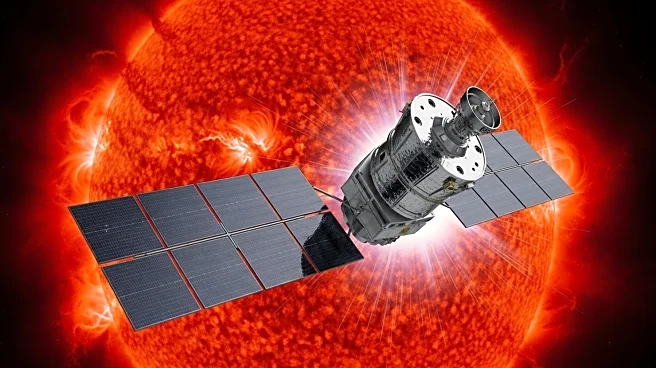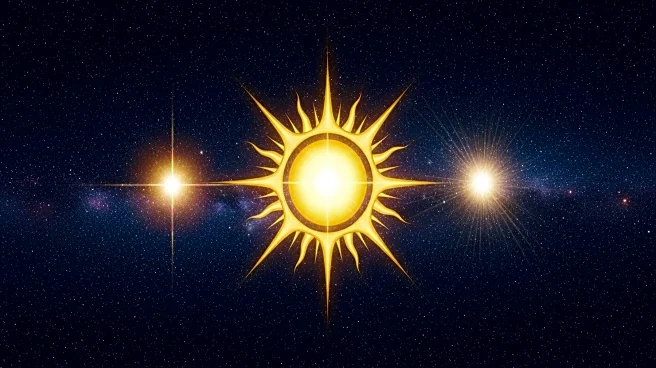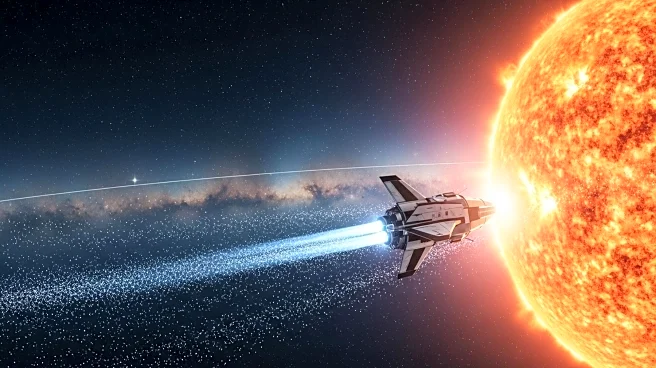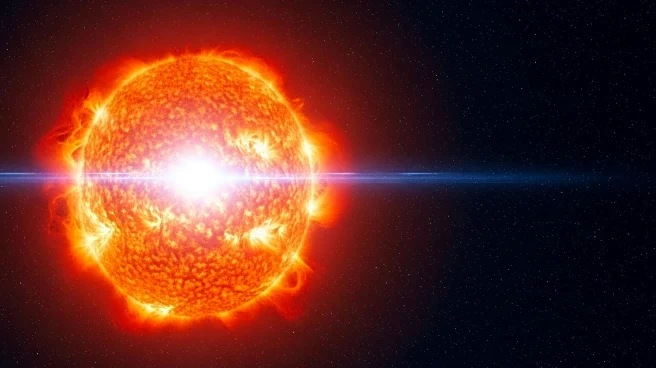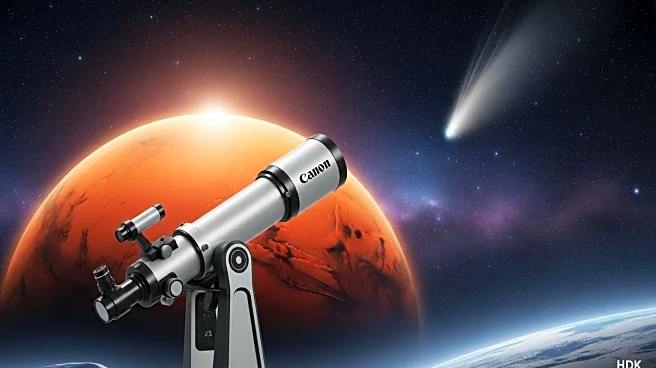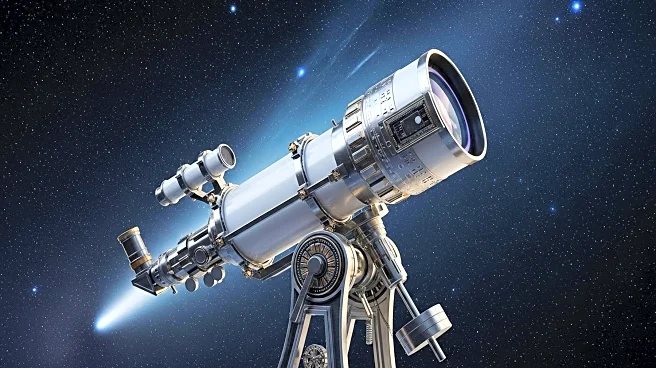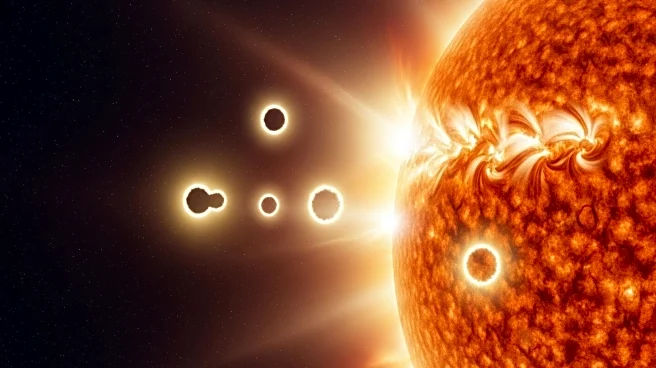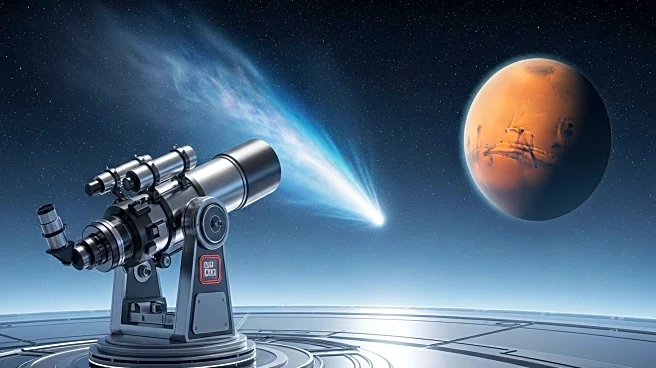What's Happening?
The European Space Agency's Solar Orbiter mission has successfully identified two distinct types of Solar Energetic Electrons (SEEs) originating from the Sun. These electrons are accelerated to near-light speeds and ejected into space, contributing to space weather phenomena. The study, published in Astronomy & Astrophysics, distinguishes between 'impulsive' events linked to solar flares and 'gradual' events associated with coronal mass ejections (CMEs). The Solar Orbiter's proximity to the Sun allowed researchers to observe these particles in their early state, providing insights into their formation and behavior as they travel through the solar system. This research enhances understanding of space weather, which is crucial for protecting spacecraft and satellites from high-energy particles.
Why It's Important?
Understanding the behavior of Solar Energetic Electrons is vital for predicting space weather, which can impact satellite operations and astronaut safety. The study's findings help differentiate between particle events that pose varying levels of threat, particularly those associated with CMEs, which carry more high-energy particles. This knowledge is essential for developing accurate forecasting models to mitigate potential damage to space infrastructure. The collaboration between European and U.S. scientists underscores the importance of international efforts in advancing space research and technology.
What's Next?
The ESA plans to launch the Vigil mission in 2031, which will observe the Sun's activity from a unique vantage point, providing early warnings of potentially hazardous solar events. Additionally, the upcoming Smile mission will study Earth's response to solar storms, further enhancing our understanding of space weather interactions. These missions aim to improve predictive capabilities and safeguard space assets from solar-induced disruptions.
